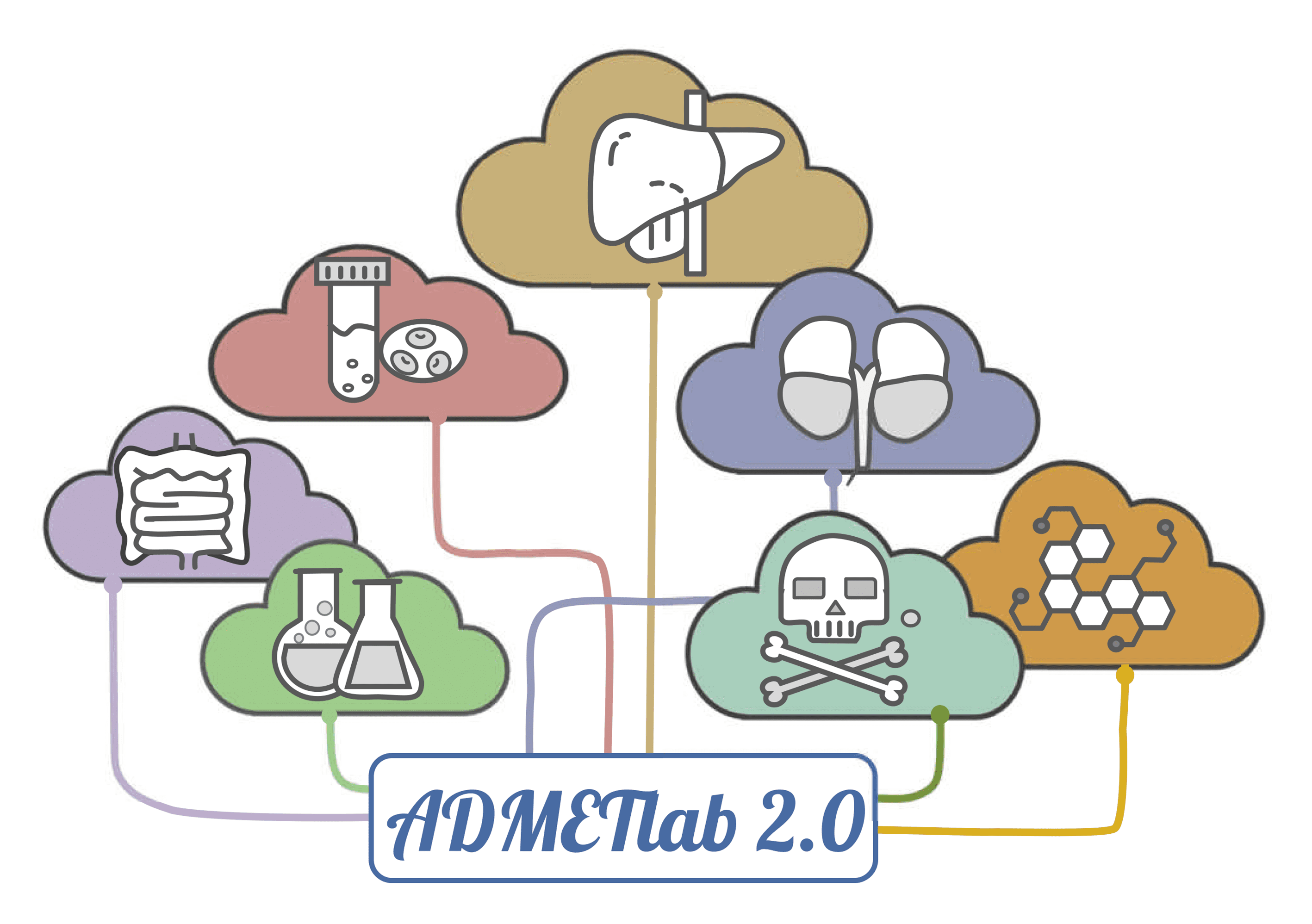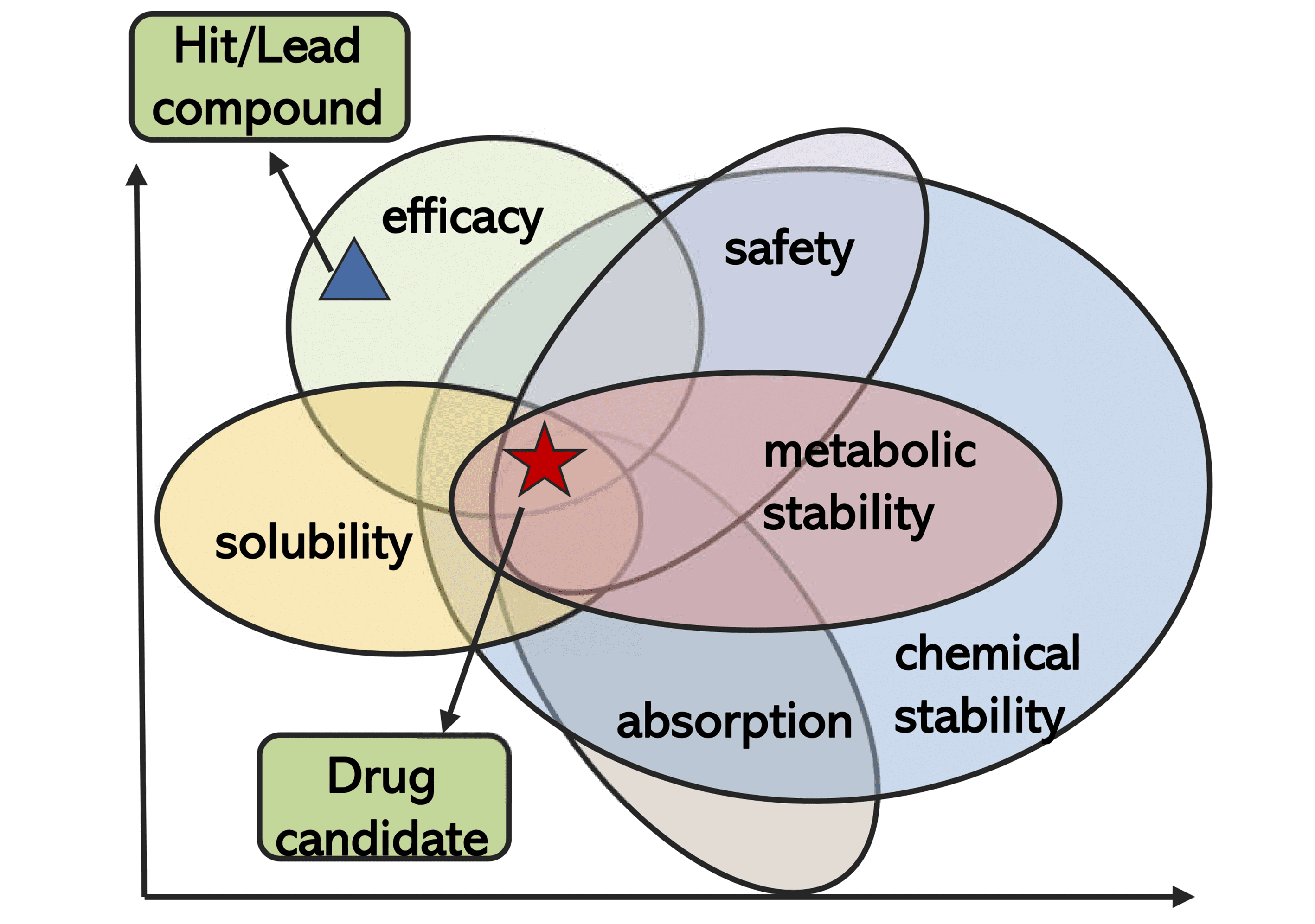ADMET Evaluation
ADMET Evaluation function module is composed of a series of high-quality prediction models trained by multi-task graph attention framework. It enables the users to conveniently and efficiently implement the calculation and prediction of 17 physicochemical properties, 13 medicinal chemistry measures, 23 ADME endpoints, and 27 toxicity endpoints and 8 toxicophore rules (751 substructures), thereby selecting promising lead compounds for further exploration.
ADMET Screening
ADMET Screening is the batch mode of evaluation, designed for the prediction of molecular datasets. SMILES strings and SDF/TXT formatted files are supported molecular submission approaches. This module is suitable for the evaluation of empirically designed or visually screened molecules before chemical synthesis and biochemical assays, which allows scientists to better focus their experiments on the most promising compounds.




